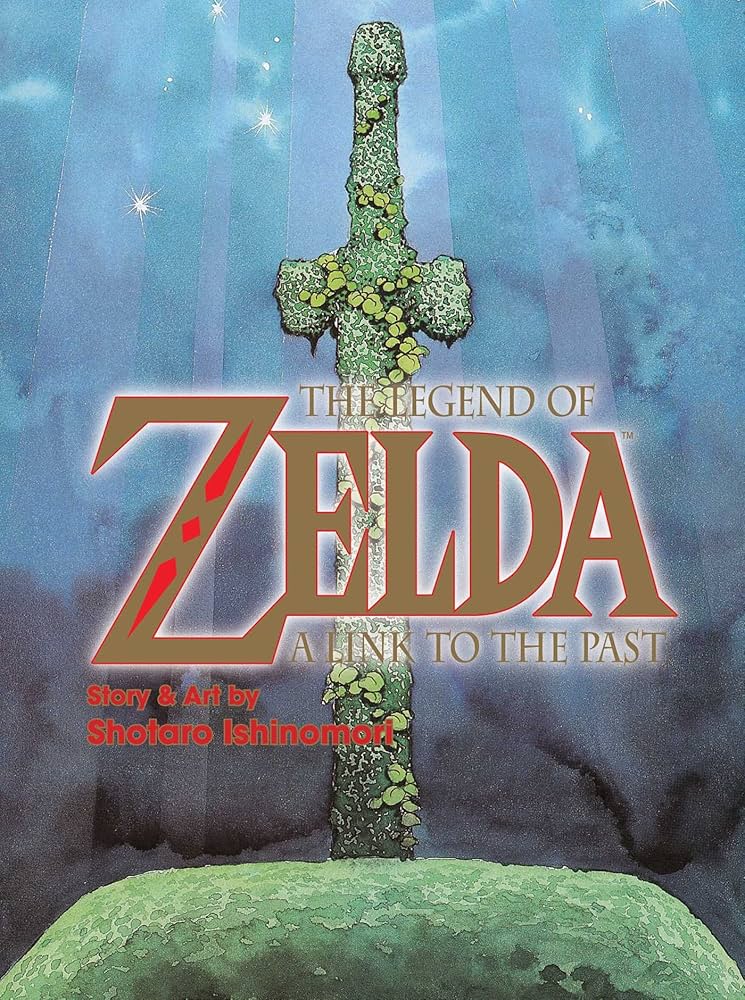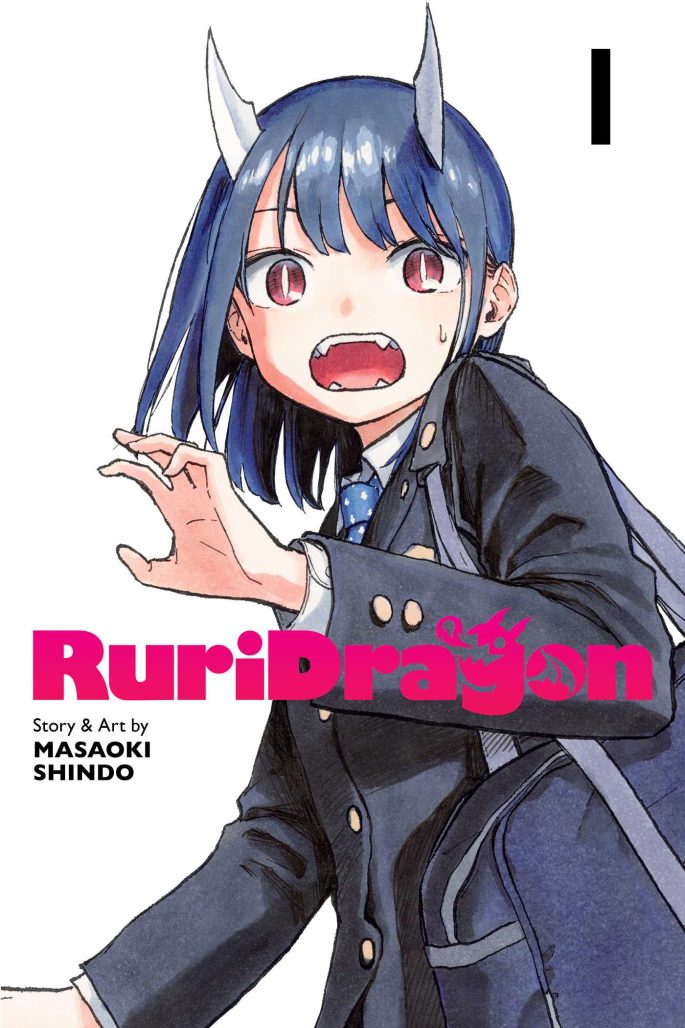With more people reading manga and Webtoons (aka vertical scroll comics) than ever before, Beat’s Bizarre Adventure gives three writers an opportunity each week to recommend some of their favorite books and series from Japan, Korea, and elsewhere. This week we have a video game adaptation by a manga master, scary pools, and, of course, dragons.
The Legend of Zelda: A Link to the Past
Writer/Artist: Shotaro Ishinomori
Translation: Dan Owsen
Cover & Interior Design: Yukiko Whitley
Design Assistant: Justin Brillo
Publisher: VIZ
During the course of its 24 -ear long run, the iconic video game magazine Nintendo Power periodically ran comics adapting Nintendo games. In the early 90s, they adapted many of the hits for the Super Nintendo system; Super Mario World, Super Metroid, and Star Fox. For the iconic game The Legend of Zelda: A Link to the Past, the magazine nabbed the legendary creator of Kamen Rider and manga pioneer Shotaro Ishinomori. This would be the equivalent today of getting Eiichiro Oda to draw an Animal Crossing manga.
Fantasy wasn’t a genre that Ishinomori often drew. Unsurprisingly, though, his faithful adaptation of the game rules. Legend of Zelda: A Link to the Past‘s splash pages (like the destruction of Ganon’s pyramid) are among his best. Ishinomori’s Link is more brutish looking than the character’s modern design, but it works for this particular story. He is tested constantly as he hacks and slashes his way through the game’s gauntlet of challenges. This series also offered one of the rare times Ishinomori had the opportunity to draw an entire series in full color.
You would never guess from this book that the artist would die six years after finishing it. This is the work of a master with gas still in the tank. — D. Morris
Don’t Enter the House Pool
Writer/Artist: Tuffuo
Editor: Mireya
Proofreader: Meowserboo
Platform: WEBTOON
Originally I was going to write about Tuffuo’s WEBTOON Original Uriah. But to my surprise, Tuffuo just launched a new series on Halloween: Don’t Enter the House Pool, a mature-rated horror webtoon about a boy named Jasha living with a coven of witches at a magical academy. Born without magic to his mother who died during childbirth, he is bullied throughout his life. He is told from the very beginning that he must never enter the titular house pool.
Tuffuo’s art has evolved dramatically since the start of Uriah. Their current art style has more detailed clothing, with attention given to proper wrinkles and folds. Character outlines are cleaner, more uniform, and just thick enough to distinguish them from backgrounds and scenery. The paneling is more refined as well. The earlier chapters of Uriah sometimes had two panels sharing the same horizontal space within the vertical comic. Now each panel is given its own space within the vertical canvas, which better allows panels to breathe and also refines the pacing.
Backgrounds mix 3D assets with painted assets and brushes. It is done in a way where you can’t tell 3D assets were used unless you look closely. It shows just how much effort was spent blending these methods to create a cohesive fictional world. Also, while Uriah previously utilized cell shading and gradient shading to add depth to the art and characters, Don’t Enter the House Pool uses only cell shading. The result shows Tuffuo’s evolution as an artist while playing to the strengths of the comic’s new world and story.
Don’t Enter the House Pool starts with a strong hook in the present before rewinding the clock. The reader is left to figure out how the story gets to that point. But like Uriah, the series is all about “show, don’t tell.” Its mysteries are shown visually in the panels and aren’t directly addressed. Tuffuo leaves a lot to the reader’s imagination. When answers are revealed, they just provide more questions for the reader to ponder and keep them invested in the story.
As a fan of Uriah, I’ll keep reading the series as new episodes are released every Sunday. If this sounds like your type of horror story, or if you just want to read a fresh new mature-rated webtoon on the platform, give it a read and let me know what you think about it in the meantime.
Until next time, hehehoho <3 — Justin Guerrero
Ruri Dragon
Writer/Artist: Masaoki Shindo
Translation: Caleb Cook
Lettering: Kyla Aiko
Publisher: VIZ
Ruri Dragon is a refreshing slice-of-life manga that blends everyday teenage struggles with a whimsical supernatural twist. Written and illustrated by Masaoki Shindo, the series began as a one-shot in Jump Giga in December 2020 and later moved to Weekly Shōnen Jump. It earned its readers not for epic battles or world-ending stakes, but for something far more subtle and charming: the quiet, relatable journey of a half-dragon girl just trying to get through high school.
The story follows Ruri Aoki, a laid-back, somewhat apathetic teenager who wakes up one morning to find dragon horns sprouting from her head. When she confronts her mother, she’s met with a hilariously casual confession: “Your dad’s not a human being.”
It turns out Ruri’s father is a dragon—information her mother somehow forgot to mention until the horns made it impossible to hide. This comically awkward reveal sets the tone for the manga: humorous, soft, and grounded despite its supernatural premise.
Ruri Dragon explores the small, awkward, and heartfelt moments of navigating adolescence with unexpected dragon traits. From dealing with curious classmates and confused teachers to new abilities she never asked for, Ruri handles everything with a blend of sarcasm, resignation, and quiet resilience. A standout example comes in Chapter 4, when Ruri judges a cheerful, multicolored-haired girl named Airi Kashiro, assuming she’s unserious academically—only to discover she’s actually incredibly helpful. Their honest conversation about prejudice and first impressions deepens the narrative, showing the manga’s thoughtful approach to themes of identity and acceptance.
Shindo’s art style complements this tone perfectly: clean, expressive, and adorable without being overly kawaii. The illustrations capture Ruri’s deadpan expressions and tiny comedic beats beautifully, making even the quietest scenes feel warm and engaging.
The only bittersweet aspect of this series is its pause in 2022 due to Shindo’s health—an unfortunate but important reminder of the pressures manga artists face. Many readers expressed concern, but the respect for Shindo’s wellbeing only deepened the affection for the series.
Ruri Dragon isn’t about dragons destroying cities or epic hero quests—it’s about being different, feeling uncertain, and doing your best anyway… even if “your best” sometimes means going back to being lazy. It’s charming, relatable, and gently funny—a perfect comfort read for teens and adults alike. — Ilgın Side Soysal
Follow Beat’s Bizarre Adventure to get weekly manga and webtoon recommendations!
Check out other recent review pieces from The Beat!

 7 hours ago
1
7 hours ago
1





 English (US)
English (US)